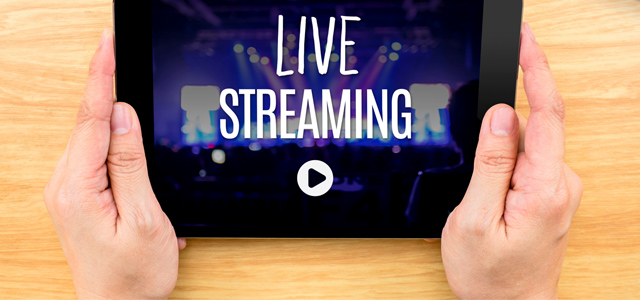In the rapidly moving world of social media, one of the standout innovations and most popular features of the eighteen months is the ability to broadcast live video from your mobile device.
Beginning with the ground breaking apps Meerkat and Periscope, which launched nearly simultaneously in 2015, and popularised by Facebook in its Facebook Live feature, anyone with a smartphone and internet connection can now broadcast live video. In a world of rapid and dramatic technological breakthroughs, the ability to broadcast live seems truly amazing, even magical.
Invested heavily in this new technology has been Facebook, home to 95% of Australia’s internet users who, on average, spend 12-and-a-half hours a week on the site. The live broadcast technology is such a priority that they have placed it on the main menu bar (across the top of its mobile app), along with photos and check-ins.
Already, many Congregations and ministry leaders have found live video to be a useful tool in their outreach and community building.
Sunday Morning Live
Many of my ministry colleagues from around the world broadcast their Sunday morning sermons and worship services live on Facebook. Congregations often find this much easier and more affordable than more traditional livestreaming services, which require extra equipment and know-how.
As one ministry leader shared with me, “Live video streaming is big. We have a Congregation that is live video streaming on Facebook Live. They are getting tremendous response to the live video streaming of the Eucharist. I imagine that that’s the kind of stuff that’s going to be happening more. I imagine that there is going to be an explosion of Facebook Live users in the very near future.”
In addition to sharing the sermon and worship experience, some ministers host live question and answer sessions on Facebook Live. For instance, pastor and author Rob Bell regularly hosts live half-hour long conversations on Facebook, responding to questions that people write in the comments. Other simply use live video spontaneously, offering glimpses into their Congregational communities. And when Congregations around my hometown of Boston, Massachusetts could not hold Sunday services because of record-setting blizzards, some took to the internet and broadcast services on YouTube Live.
There are countless ways to leverage live video to share the Gospel within and beyond our communities.
Broadcast benefits
But why bother with live video at all? There are a couple of reasons. First, it has become incredibly popular in a short period of time and, like Facebook, social media companies are investing heavily in this technology and will continue to encourage people to use and view live video. In short, live video is here and here to stay. Second, live video captures some of the spirit of today’s social media, which is more and more about being in the moment and sharing the moment with others. A great example of this is Snapchat, which is exploding in popularity. Today, 22% of Australians are on the app — that’s higher than Twitter or Pinterest, and nearly as many as LinkedIn.
Live video services and Snapchat are about sharing the moment in an unfiltered first-person viewpoint, rather than the more edited and elegant pictures of Instagram or videos on YouTube. Many people find being live, together, is a more intimate, authentic, and visceral experience for both broadcaster and viewer.
Often, in churches, we are accustomed to presenting our viewers and listeners with a finished product, whether in sermons, worship, or education programming. However, social media pushes us to invite people into the process, into the moment, with us (and we with them) — to experience and learn and grow together.
Keith Anderson
Pastor Keith Anderson employs a wide range of social media to minister both on and offline. He is an author of two books, speaks regularly with local and national church groups, synods, and other organisations on the practice of digital ministry and the impact of digital culture on face-to-face ministry.






